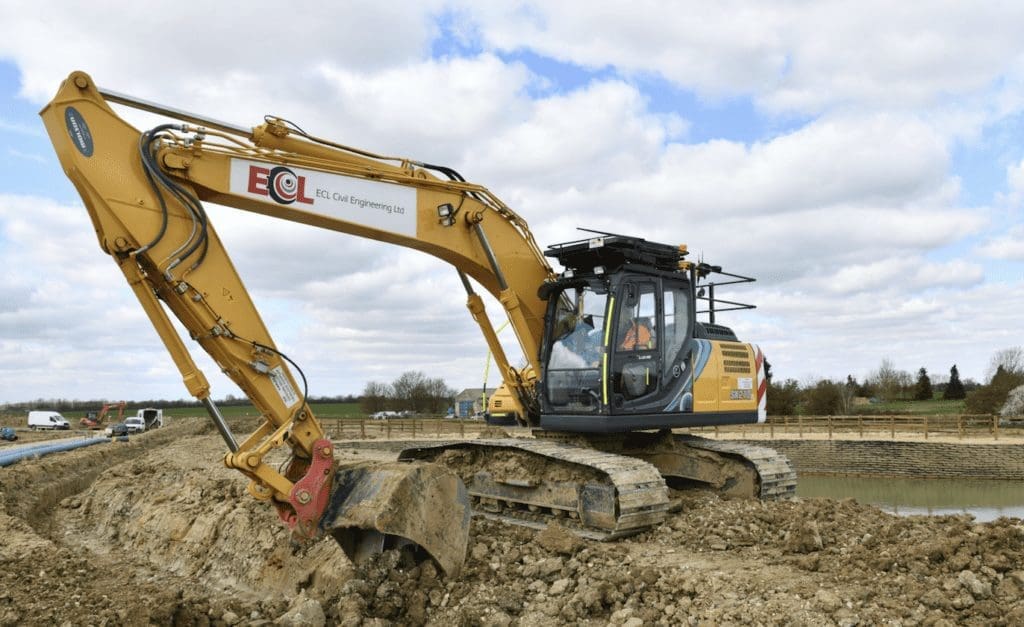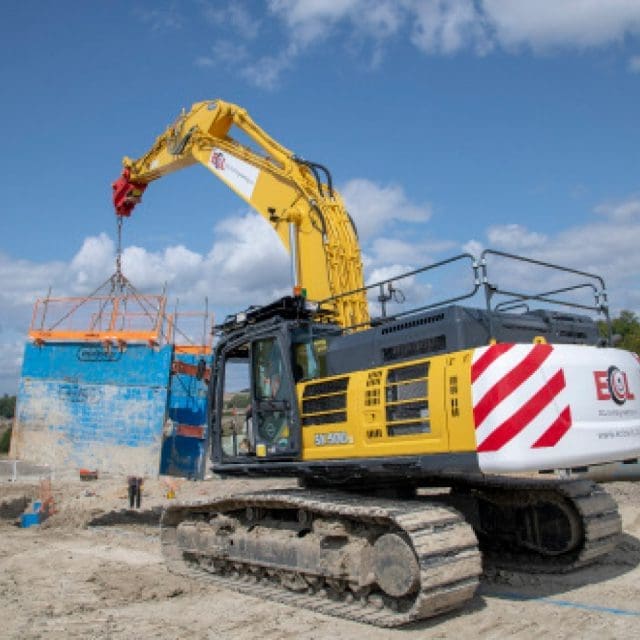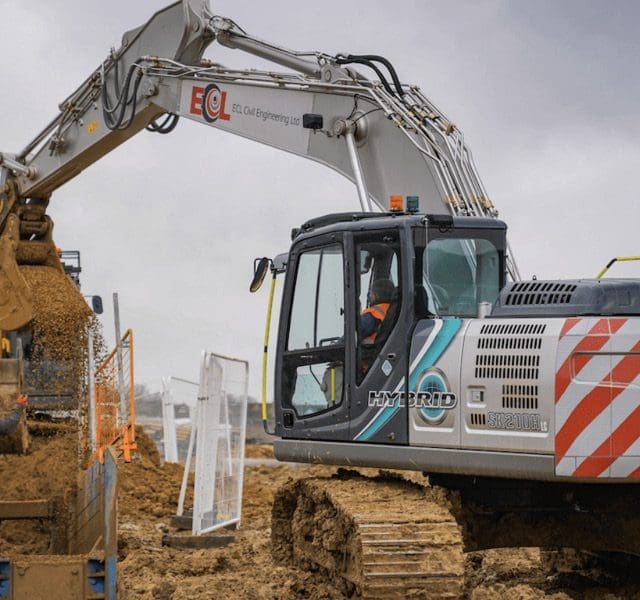Construction work as a whole is considered a high-risk work environment. And though health and safety measures have vastly been improved over the recent years. Nevertheless, the industry still accounts for a high percentage of fatal and major injuries at work.
The most challenging task is changing the workers’ mindset to a point where they automatically safely do things, and that safe practice becomes a habit.

We must instil best practices into site workers and ensure that correct procedures are being followed at all times. Consequently, ECL undertakes a stand-down initiative once a month to highlight potential hazards on site. Furthermore, they run accident prevention campaigns such as the avoidance of service strikes to encourage best practices on sites.
The primary safety challenges for the civil engineering industry as a whole are:
Falls from height
When working from a height, a risk assessment should be carried out. In addition, all work must be planned, controlled, and supervised. Furthermore, site workers need to be trained in using safety equipment and preventative measures such as guard rails, harnesses and safety nets must be in place where needed.
A fall from a height is the greatest cause of lethal workplace injuries. The HSE (Health and Safety Executive) statistics show that 40 workers were killed due to a fall from height in 2018/19.
(www.hse.gov.uk)
Slips, trips and falls
Making small but vital changes can dramatically reduce the number of injuries on-site, and hazards can be avoided with proper work area management, which includes ensuring that equipment and tools are kept in a secure area after use and that walkways are kept free of debris and hazards at all times.
Slips, falls and trips accounted for 29% of non-fatal injuries within the construction industry in 2018/19.
(www.jetblacksafety.com)
Plant Machinery Accidents
Construction sites are typically full of activity and, as with slips and trips, being hit by a moving object can become a hazard without proper work area management, which includes clearly defining areas for equipment use, the wearing of protective clothing such as high vis jackets in order to be seen, as well as protective equipment against moving or falling objects.
Pedestrians and vehicles do not mix, and for this reason, footpaths and roadways need to be separate whenever possible. In addition, by law, pedestrians or vehicles must use a traffic route without causing danger to the people working near them.
Other risks include using overhead lifting equipment, working close to moving objects, poor light and working in congested spaces.
Noise
To avoid overexposure to loud noises, employees must wear hearing protection when working with loud equipment such as power tools and groundwork equipment.
According to the HSE, there were 1125 new cases of occupational deafness between 2010 to 2019, with an estimated 17000 workers with work-related hearing problems.
Manual Handling
Tasks involving lifting, holding, carrying, lowering, pushing and pulling materials and material loads all involve manual handling. Not using the correct techniques can cause injuries to different parts of the body.
Working safely around excavations
Excavation sites should be regularly inspected before and during shifts to ensure they are fully secured. Site managers should hold frequent safety meetings to keep workers informed of procedures. Workers should be issued with the correct PPE and appropriately maintained equipment.
People working in and around excavations are particularly at risk. First, the perimeter of an excavation can become unstable, resulting in collapse when extra loads are applied (like scaffolding or vehicles). Second, the integrity of surrounding structures can become compromised due to the excavation.
Asbestos
Elements in older buildings can present hazards to construction workers. These elements include ceiling tiles, thermal paper, wall plaster, insulation, cement siding and even switchgears and circuit breakers. Electricians are particularly high-risk because of the presence of asbestos. Asbestos can cause fatal respiratory conditions. Asbestos-related lung cancer makes up 20% of annual deaths from lung disease, and for construction workers, the most considerable occupational risk of disease is asbestos. In 2005 HSE research estimated that asbestos was responsible for the death of over 2,500 construction workers. (www.hse.org.uk)
Airborne Dust and Particles
Dust exposure can be controlled with the use of exhaust systems and the wearing of adequate PPE, along with proper cleaning down before taking breaks or leaving site.
consequently, there are multiple airborne sources for potential lung damage within the construction environment, such as:-
- Dust caused by stone masonry
- Dust from the removal of rubble and general site clean-up
- Toxic fibres become airborne when laying carpet
- Inhaling isocyanates are used in paints, varnishes, glues, flooring, building insulation materials, and various wood dust.
Service Strikes
To prevent service strikes, site workers need to make sure that they check drawings for potential services and obtain the correct permits before starting to dig.
Service strikes are one of the most significant health and safety dangers that workers can encounter on site. These strikes can result in severe injury or even death without the correct preparations.
Effective ways to prevent accidents and deaths in the construction industry include:
- Holding regular safety meetings and toolbox talks
- Keeping night work to a minimum
- Making PPE mandatory, including high-visibility or reflective clothing
- Scheduling regular breaks throughout the workday
- Carrying out daily pre-work site surveys to spot any potential risks
- Introducing warm-up exercises
- Having clear warning signage in place
- Keeping tools and equipment maintained
- Implementing Health & Safety training
- Avoiding prolonged exposure to sunlight
What are the safety challenges in civil engineering?
- Falls from height
- Slips, trips and falls
- Plant Machinery Accidents
- Noise
- Manual Handling
- Working safely around excavations
- Asbestos
- Airborne Dust and Particles
- Service Strikes
- Changing workers mindsets


